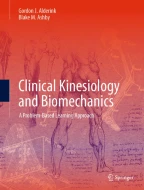Biomechanics: Overview, Terminology, and Concepts

Engineering mechanics involves the analysis and design of mechanical systems. Biomechanics is a multidisciplinary science concerned with the application of classical mechanical principles to the study of biological structures. Our interest here is the application to the human body at rest and in motion. In this chapter, we briefly define the three general categories of mechanics: rigid body, deformable body, and fluid. We introduce principles of kinematics and kinetics and review Newton's three laws of motion.
This is a preview of subscription content, log in via an institution to check access.
Access this chapter
Subscribe and save
Springer+ Basic
€32.70 /Month
- Get 10 units per month
- Download Article/Chapter or eBook
- 1 Unit = 1 Article or 1 Chapter
- Cancel anytime
Buy Now
Price includes VAT (France)
eBook EUR 85.59 Price includes VAT (France)
Hardcover Book EUR 105.49 Price includes VAT (France)
Tax calculation will be finalised at checkout
Purchases are for personal use only
Bibliography
- Neumann DA (2017) Getting started. In: Neumann DA (ed) Kinesiology of the musculoskeletal system, foundations for rehabilitation, 3rd edn. Elsevier, St. Louis Google Scholar
- Nordin M, Frankel VH (2012) Basic biomechanics of the musculoskeletal system, 4th edn. Lippincott Williams & Wilkins, Baltimore Google Scholar
- Özkaya N, Leger D, Goldsheyder D, Nordin M (2017) Fundamentals of biomechanics, equilibrium, motion and deformation, 4th edn. Springer International Publishing, Cham BookGoogle Scholar
- Winter DA (2009) Biomechanics and motor control of human movement, 4th edn. Wiley, Hoboken BookGoogle Scholar
Author information
Authors and Affiliations
- Coopersville, MI, USA Gordon J. Alderink
- Grand Valley State University, Grand Rapids, MI, USA Blake M. Ashby
- Gordon J. Alderink

